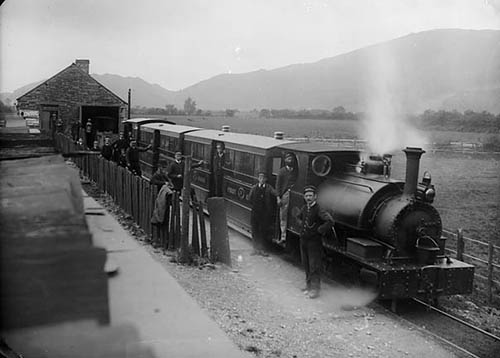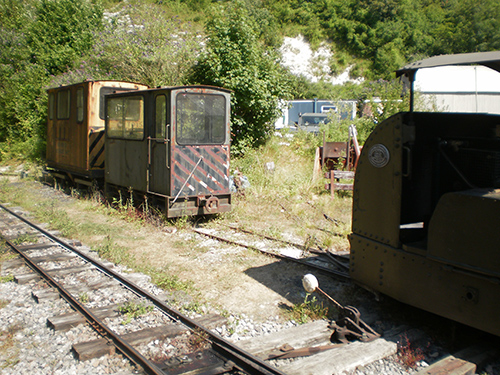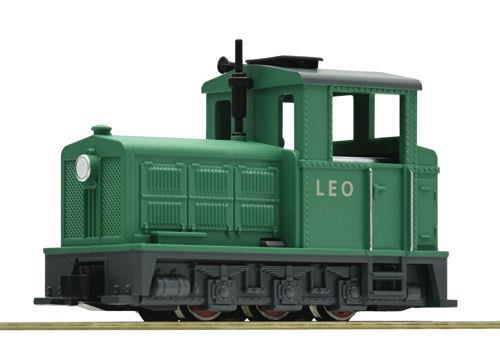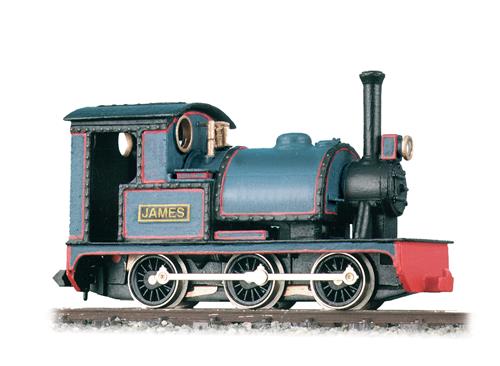

 MARTIN LOVELL explains how to get going in the 'non-standard' scales.
MARTIN LOVELL explains how to get going in the 'non-standard' scales.
Firstly, what is "Narrow Gauge"? When 4'8¾" was fixed as "Standard Gauge" for railways in the UK any railway under this gauge, but more than 18" was termed as Narrow Gauge.

Around the country at that time there was a proliferation of different gauge railways, mostly in industrial areas where space was limited, or where a railway was required but money was short - so a contour-hugging railway, avoiding expensive civil engineering such as bridges and tunnels, would be favoured.
Originally, these lines were purely used for shifting the produce of mines and quarries, but later the demand for cheap transport in the areas served by these lines gave rise to passenger carrying stock, even though these could be very basic.
Later passenger stock improved, as narrow gauge lines linking to the rest of the railway network were found to be more profitable; even if transhipment of goods caused delays. Examples of this arrangement could be found on the Lynton and Barnstaple in North Devon, or the Southwold in Suffolk.

Other companies developed adapted wagons to save time with unloading and loading, such as the Penrhyn which carried 2' wagons on its 4' gauge, or the Leek and Manifold which carried standard gauge wagons on its 2'6" gauge on transporter wagons. History aside, a narrow gauge layout can be incorporated into a standard gauge layout to provide additional industrial traffic, or something different like a tourist railway. All of the ingredients for these sorts of railways can now be found in a ready-to-run state, rather than the kit or scratch built stock which we had to put up with not that many years ago.

Roco HOe Feldbahn Leo Diesel Locomotive
In the past the only ready-to-run stock came from the likes of Jouef and Eggerbahn (which is only available now on the second-hand market) and kits from the likes of Gem, Langley and Parkside Dundas, the last two still being available (Parkside Dundas is now split into Parkside Models and Dundas Models - Ed). Track was either adapted N gauge, or Jouef, until Peco introduced their "Crazy Track", (Now called Streamline and Setrack - Ed) referring to the sleepers not the modellers! Initially only available as lengths of flexible track, points came later.

PEGL-2 Peco OO9 0-6-0/0-4-0 Saddle Tank James Whitemetal Body Kit
Luckily for us Narrow Gauge modellers, the ready-to-run loco and stock market has expanded in the last couple of years with Peco, Bachmann, Kato and Heljan producing models in OO9 scale, and Minitrains, Hobbytrain and Roco looking after the HOe side.
Q: What is the difference between OO9 and HOe?
A: Basically the same as the difference between OO and HO. The track gauge is the same, i.e. 9mm, but the scales are slightly different, OO9 being 4mm to the foot featuring mostly UK stock, and HOe being 3.5mm to the foot, being Continental and American outline.
Q: If I don’t like using flexible track, what can I do?
A: Getting started in these scales is now even easier with Peco now producing Setrack pieces in OO9/HOe, together with planbooks and books on modelling Narrow Gauge lines.
Q: I have a spare controller for my OO layout, is this alright to use on a OO9 system?
A: Yes, the motors on the locos are exactly the same as N Scale, so will run quite happily on 0 to 12 volt DC.
Q: Will the likes of Bachmann and Minitrains stock be compatible with regards to couplings?
A: Yes, the couplings are all of the loop and hook type, the same with Roco, Peco and the rest. Peco produce replacement couplings to convert N scale wagon chassis' to this type of coupling.
Q: What about Digital (DCC)?
A: Some Roco HOe locos come with the option of being converted to DCC - but at the moment, most other types would need to be hard-wired in order to convert them.
Q: With regard to kit built locos, where would I obtain a suitable chassis?
A: A lot of ready-to-run N Scale locos would be suitable for conversion, especially 0-6-0 tank locomotives. For the Peco Glyn Valley tram loco the Kato wheeled powered chassis will fit with a bit of modification.
Other methods available are simply to re-model an N Scale locomotive by cutting off the cab and making it taller, and in the case of steam locos adding bigger chimneys and the like.
Q: What about buildings?
A: Any buildings suitable for OO or HO will suit, the same with people and lorries etc. as these will be the correct scale. Platforms will need to be lowered however, and Bachmann have introduced in their Scenecraft range some typical Narrow gauge buildings.
So there we are - a brief insight into the world of Narrow Gauge modelling. It can be an add on to an existing layout or a separate layout. The flexibility of Narrow Gauge means that layouts can be as small as 1ft 6in by 2ft, sometimes smaller than that!
Happy modelling,
Martin